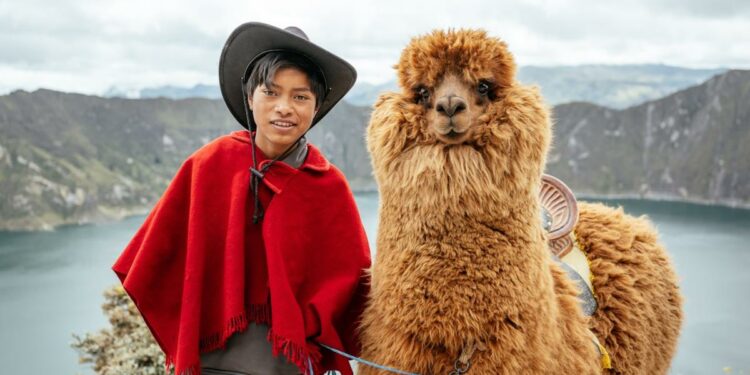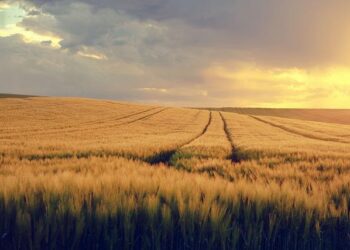Photograph by Ben Pipe” data-src=”https://s.yimg.com/ny/api/res/1.2/JfKXTgYNia33POLmo0DvWA–/YXBwaWQ9aGlnaGxhbmRlcjt3PTk2MDtoPTY0MA–/https://media.zenfs.com/en/national_geographic_articles_149/2065875d53c2628b37a31ceb0ff04acd”/>
The town of Zumbahua acts as the gateway to Quilotoa and marks the start of the Quilotoa Loop, a challenging multi-day hike through the region. Journey through Zumbahua on a Saturday to experience the colourful weekly food market, where locals buy and sell produce. Photograph by Ben Pipe
Photograph by Ben Pipe” data-src=”https://s.yimg.com/ny/api/res/1.2/R7zLnM2tR2xM6a.xHfiCIQ–/YXBwaWQ9aGlnaGxhbmRlcjt3PTk2MDtoPTY0MA–/https://media.zenfs.com/en/national_geographic_articles_149/fdc5914fe460606e36c3396d197c8e7e”/>
Zumbahua’s food market is the ideal place to fuel up before continuing the journey to Quilotoa. Pinchos are thin beef skewers that are very popular at fairs and local markets throughout Ecuador. They are sometimes served with a piece of chorizo and ripe plantain on the side, all of which is then drizzled with a delicious coriander and white cheese sauce. Photograph by Ben Pipe
Photograph by Ben Pipe” data-src=”https://s.yimg.com/ny/api/res/1.2/puJacZBl__piMMswhNJpUA–/YXBwaWQ9aGlnaGxhbmRlcjt3PTk2MDtoPTY0MA–/https://media.zenfs.com/en/national_geographic_articles_149/5d092c94d16a31826ac92aec8bd6d1a2″/>
En route to Quilotoa, Maria Rosario Lasenquisa wears a traditional blue shawl and dark hat. The tradition of women in South America — mainly Bolivia, Peru and Ecuador — wearing bowler and fedora hats is said to date back to the early 1800s, when a shipment meant for English (male) workers were too small in size, so they were given to the locals. Photograph by Ben Pipe
Photograph by Ben Pipe” data-src=”https://s.yimg.com/ny/api/res/1.2/s9LsYJl2eiOb10byw_aNqg–/YXBwaWQ9aGlnaGxhbmRlcjt3PTk2MDtoPTY0MA–/https://media.zenfs.com/en/national_geographic_articles_149/17365cecd0596bc672bde3af2a0e2794″/>
The tumbling hills of Cotopaxi Province in Ecuador are not only home to the Quilotoa lake, but are also a site of cultivation for food crops like maize, soybeans, manioc, potatoes and vegetables. Photograph by Ben Pipe
Photograph by Ben Pipe” data-src=”https://s.yimg.com/ny/api/res/1.2/2AzQflWzccdE_eiGGXs3aA–/YXBwaWQ9aGlnaGxhbmRlcjt3PTk2MDtoPTY0MA–/https://media.zenfs.com/en/national_geographic_articles_149/4c7a7f4012d837a5c3e0a289898166da”/>
Traditional dress for Andean men often includes colourful ponchos made from Alpaca wool, which is ideal for cold nights. In the high altitude terrain of Cotopaxi, it’s the clothing of choice for local man Pedro Chuluquinga. Photograph by Ben Pipe
Photograph by Ben Pipe” data-src=”https://s.yimg.com/ny/api/res/1.2/YLnZY4aivob2cZpL0mAfnA–/YXBwaWQ9aGlnaGxhbmRlcjt3PTk2MDtoPTY0MA–/https://media.zenfs.com/en/national_geographic_articles_149/501f18a2020ad0fbb5ff3b0c246c5335″/>
A local grills cuy (Guinea pig) on a barbecue in Quilotoa. The smooth, rich meat is much more complex than chicken or pork. In Quito cuisine, cuy is traditionally served over potatoes and sometimes accompanied with a lively egg and onion sauce. Photograph by Ben Pipe
Photograph by Ben Pipe” data-src=”https://s.yimg.com/ny/api/res/1.2/9EM3zsdGgTdgCcwGsi2akQ–/YXBwaWQ9aGlnaGxhbmRlcjt3PTk2MDtoPTY0MA–/https://media.zenfs.com/en/national_geographic_articles_149/df270effd5acb19bfd3649a356374f4f”/>
Guinea pig isn’t eaten every day, or by everyone in the Ecuadorian Sierra — as this mountainous region is known. However, the rodent is still revered by many and serves as a centrepiece at special celebrations. Photograph by Ben Pipe
Photograph by Ben Pipe” data-src=”https://s.yimg.com/ny/api/res/1.2/kV.CtGo.0_tKkH5LToTZCA–/YXBwaWQ9aGlnaGxhbmRlcjt3PTk2MDtoPTY1OA–/https://media.zenfs.com/en/national_geographic_articles_149/4dbbb646db5c1d3d996b543cb23534ed”/>
Quilotoa, the westernmost volcano in Ecuador’s Western Cordillera, last erupted 800 years ago. The force of the eruption led to its subsequent collapse, forming what is now Quilotoa’s famous water-filled crater lake. Photograph by Ben Pipe
Photograph by Ben Pipe” data-src=”https://s.yimg.com/ny/api/res/1.2/lnQim3LM8Jhwvb_e8Euy0A–/YXBwaWQ9aGlnaGxhbmRlcjt3PTk2MDtoPTY0MA–/https://media.zenfs.com/en/national_geographic_articles_149/c2da605bf531f9221ed51d2cb0b30321″/>
Alpacas are prized all over the world for their fleecy coats, which are shorn to make warm, soft and lightweight textiles that are much appreciated in high-altitude environments. However, today’s alpaca population is threatened by climate change, which has changed weather patterns in the Andean region where these animals graze. The once-verdant pastures at their 13,000-foot elevations are drying out and unpredictable changes in temperatures have made them vulnerable to illness. Photograph by Ben Pipe
This paid content article was created for Ecuador Tourism. It does not necessarily reflect the views of National Geographic, National Geographic Traveller (UK) or their editorial staffs.
To subscribe to National Geographic Traveller (UK) magazine click here. (Available in select countries only).
Source link : http://www.bing.com/news/apiclick.aspx?ref=FexRss&aid=&tid=66ee4da1e6ce4c82b509cfc74ae99cf3&url=https%3A%2F%2Fwww.yahoo.com%2Fnews%2Fphotographic-journey-quilotoa-ecuador-volcanic-103000190.html&c=14996094675682624963&mkt=en-us
Author :
Publish date : 2024-09-13 23:30:00
Copyright for syndicated content belongs to the linked Source.












